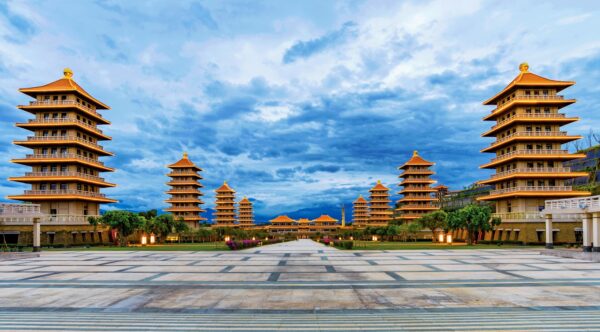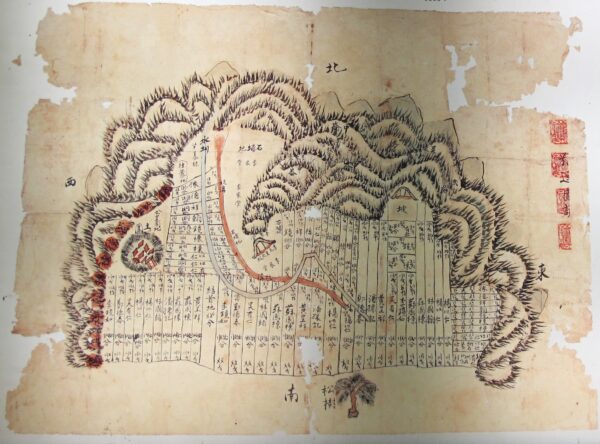Taiwan has so many museums you could visit a different one each day and fill an entire year. Some hold vast collections of historical, artistic, or natural treasures. Others are small-scale celebrations of individuals and their achievements. The following fascinating museums have all featured in Life of Taiwan’s private tours of Taiwan. Whether you’re a culture vulture or more excited by the great outdoors, Taiwan is sure to have a museum that matches your interests.
National Palace Museum (Northern and Southern Branches)
Often and rightly described as one of the world’s four truly great museums, the National Palace Museum (NPM) owes its existence to the collecting habits of China’s emperors. At any one time, the NPM is able to display just a tiny fraction of the approximately 700,000 artefacts it preserves. Some of these have been deemed too fragile to ever appear before the public, or are held back because experts are still uncertain as to their origins. Yet what you’ll see here will still take your breath away.

National Palace Museum Northern Branch
There are superb ink paintings, delicate works of calligraphy, and millennia-old carved items made of jade, alongside ornate bronze pots used in wine-drinking rituals, curios such as snuff boxes, and ceramic funeral goods. Some of these treasures are thought to be more than 5,000 years old. Others date from the 18th and 19th centuries when the Western world was beginning to have an impact on China.
Some say that you’ll learn very little about Taiwan inside the NPM. That’s true in one sense, but the museum is a fabulous introduction to the heritage that Han people in China, Taiwan, and Southeast Asia share. For anyone interested in visual arts, the museum is truly one of the highlights of a stay in Taipei. The NPM also has a Southern Branch in Chiayi, where exhibitions aim to place the cultural products of China and Taiwan within an Asian context.
National Taiwan University’s Museums Network
National Taiwan University (NTU) isn’t just the country’s most prestigious seat of learning. Its campus in Taipei is also home to a network of ten specialist museums, some of which are truly intriguing places to visit. Their names will help you predict if they’re likely to appeal to your interests. There’s the Gallery of NTU History, the Museum of Anthropology, the Geo-specimen Cottage, the Heritage Hall of Physics, the Insect Museum, the Agricultural Exhibition Hall, the TAI Herbarium, the Museum of Zoology, the NTU Archives, and the Museum of Medical Humanities.
The Insect Museum explores one aspect of Taiwan’s stupendous biodiversity (is it really possible for an island with just 0.00024 percent of Earth’s dry land to have 2 percent of the world’s insect species?) while the Museum of Medical Humanities goes back to the 1895-1945 period of Japanese colonial rule, when the authorities struggled to get on top of rampant malaria, cholera epidemics, and a serious opium problem. If you’re travelling with kids on a family tour of Taiwan, the Museum of Zoology’s collection of fossils and animal specimens might be a good place to spend an hour or so.
Not all of the displays in NTU’s museums are bilingual, but with the help of one of our highly experienced and knowledgeable guides, you’re sure to learn a lot.
National Museum of Taiwan History
Taiwan’s written history is usually said to have started in 1624 when the Dutch established a trade base in what’s now Tainan. Until well into the 18th century it was the largest town on the island and the port through which most newcomers arrived. It therefore makes sense that this superb museum should be located in Tainan.
However, the timeline in the NMTH begins long before the Dutch set foot on Taiwan with an introduction to the island’s neolithic and prehistoric cultures. In-depth displays cover the era of Qing rule (1684-1895) and the subsequent Japanese period with stories being told through original and replica objects, short videos, and even fibreglass humans.
The museum doesn’t neglect the past few decades, during which peaceful transfers of political power and vibrant social movements have transformed Taiwan into what some call Asia’s freest democracy. Recent temporary exhibitions have explored aspects of the island’s economic development and some of the protest movements that contributed to the emergence of a strong civil society.
Fo Guang Shan

Fo Guang Shan
Seldom thought of as a museum, this Buddhist monastery complex in the rural east of Kaohsiung has several exhibition halls. In addition to displays of overtly religious art, there are displays about the history of Fo Guang Shan and its founder, Master Hsing Yun (1927-2023) — essential viewing if you want to understand the development of religion in postwar Taiwan. There are some unusual and highly engrossing artefacts.
Thanks to the international impact he made during his decades of proselytising, in 1998 Hsing Yun persuaded a lama who’d fled Tibet four decades earlier to donate to Fo Guang Shan one of Buddhism’s most venerated relics: A tooth that the faithful believe was retrieved from the ashes following the Buddha’s cremation 25 centuries ago. The tooth is now housed in Fo Guang Shan’s Buddha Memorial Centre right beside the monastery. It’s a striking edifice that cost a reported £200 million.
Lanyang Museum
Even if you don’t have time to step inside this museum you’ll want to stop and take photos of the exterior. Architect Kris Yao won three major awards for his design, which was inspired by the colour and angle of nearby rock strata. Because the museum is located in one of Taiwan’s wettest regions — Yilan County in the northeast — he chose materials that don’t look drab when wet.

An 18th-century land development agreement displayed in Lanyang Museum
In addition to good coverage of local natural history, fauna and flora, Lanyang Museum provides interesting details about indigenous and farming lifestyles. Signifying the importance of the Pacific Ocean to the local economy, there’s an ocean-going harpoon-equipped vessel once used for catching swordfish.
The museum is located next to Wushi Harbour, a jumping-off point for whale-watching voyages and excursions to nearby Guishan Island. If your private tour of Taiwan will take you from Taipei to Taroko Gorge, consider detouring to this museum.
Reach out to us today and begin planning your trip-of-a-lifetime to Asia’s most exciting destination!
